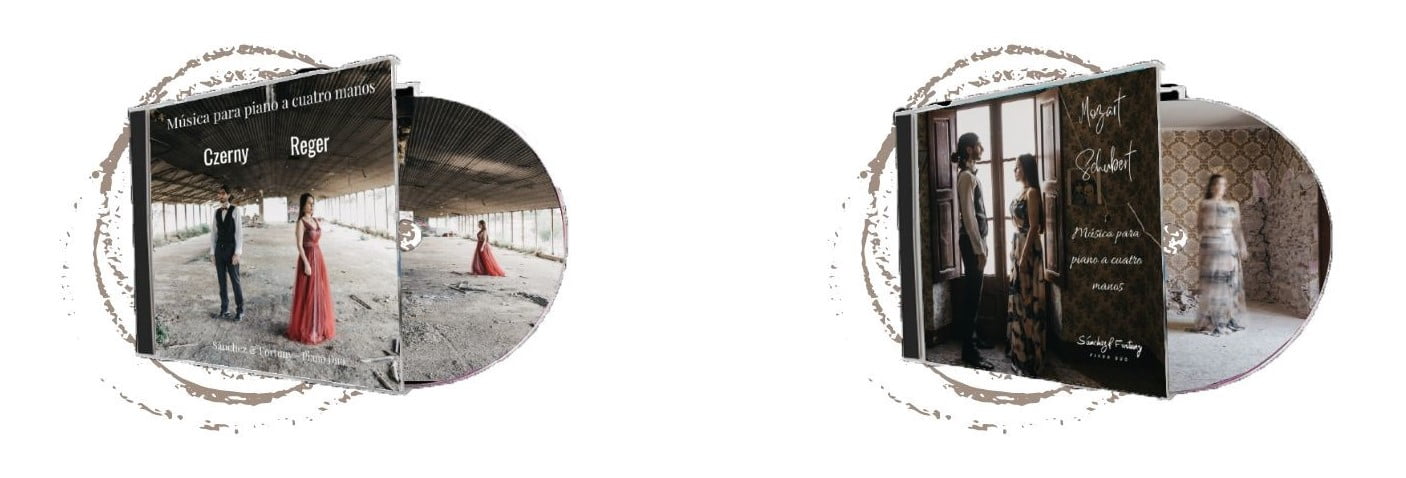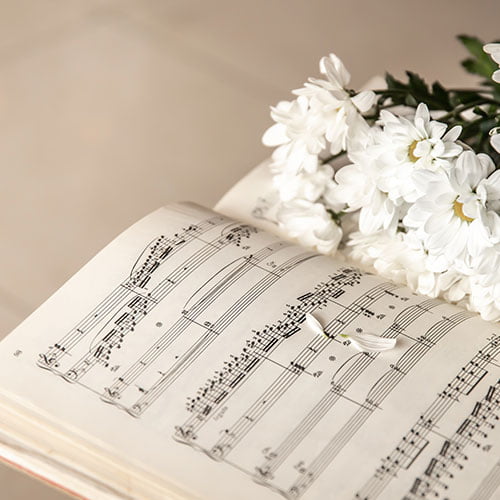What an excitement! We debut in our first blog post.
In November 2021 we recorded our first two four-hand piano music CDs. In this post, we introduce the first one: Mozart and Schubert. Music for piano four-hands. We will discuss what works it contains, why we have chosen them and what it means for us to play four hands.
The backbone of this album is the music of Wolfgang Amadeus Mozart and Franz Schubert, considered the centre of the piano duet repertoire. However, far from wanting to present the most emblematic works of the formation, such as the Sonata in D Major KV 448 for two pianos or the Fantasie in F minor D940 for four hands, we have chosen two pieces that, in our opinion, they contain all the stylistic spirit and genius of each of the composers. Yet, they, unfortunately, seem to be left in the background in terms of popularity.
Although Mozart did not invent the piano duet genre, he did lay the groundwork for it. In his case, this music has a very circumstantial reason, as with his sister Anna Maria “Nannerl”, also a pianist. They appeared in court and often took the opportunity to play together. In this sense, this genre merged the two musicians into one to impress the aristocrats wherever their father Leopoldo took them and was a letter of introduction from a talented family who organized their tours through Europe. This time we wanted to record the Allegro and Andante in G Major KV 357 with the completion of Robert Levin.
On the other hand, Schubert’s four-hand piano production amounts to a total of 54 works, of which 32 have opuses number, and Schubert is the composer who has contributed most to this genre in terms of quantity and quality. In this case, we recorded the Variations on an original theme in A flat major D813 because it represents one of the peaks of this literature. Undoubtedly, it is a concert piece and conveys the characteristics of Schubert’s personality: expressiveness, simplicity, melancholy, singing, depth, brilliance, ländler character, string quartet writing, etc … One of the engines of this genre is the relationship between Caroline Esterházy de Galántha and Schubert. The relationship between student and teacher never ended there, but the love Schubert felt for Caroline led him to write this music to share with her in the most intimate and close way of making music.
Four-handed writing leads the pianist to develop specific qualities that he does not usually use when playing alone or with chamber ensembles. On the one hand, the secondo player must sharpen the sensitivity of the pedal according to the text of the primo player and not his own, as well as take into account the different articulations between both pianists and make decisions to achieve both. Another crucial aspect is harmonization. Especially in Schubert, the harmonic element is central to the expression of the different emotional states, as in his lieder where the piano accompaniment sets a mood or scenario. At the same time, the role of the primo is the personification of this feeling as the lied singer. We also find polyphony in the middle registers where the main melodies are found and gives the texture a very characteristic three-dimensionality of four hands. But without any doubt, the understanding of one’s listening and that of one’s partner leads to the success of the musical fact which, in our opinion, is the continuous search for flexibility in phrasing within the clear framework of a pulse strongly influenced by dance, breathing, longing and listening to silence.


